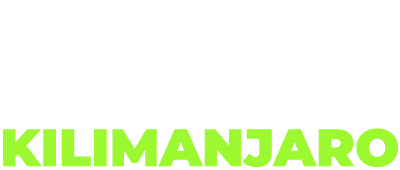Kilimanjaro Climate Zones
Kilimanjaro Climate Zones

Some have analogized the climb up Mt. Kilimanjaro to traveling from the equator to Antarctica in just a few days.
What is the climate like on Mount Kilimanjaro? Temperatures can vary dramatically given differences in altitudes and times of day. Similarly, precipitation can vary from dry to damp to wet. Mount Kilimanjaro has six distinct climate zones. Each zone has its own unique weather patterns. In general, each zone is subject to decreasing rainfall and temperature as altitude increases. Let’s take a closer look at the six zones.
Mount Kilimanjaro Climate Zones

Zone 1 – Cultivated Areas
Alt. Range: 2,600 to 6,000 ft (792 to 1,800 m)
Temperature Range:
Days: 70-90 F / 21-32 C
Nights: 40-60 F /4-15 C
Zone 1 is largely used for agriculture. It consists of rich soils that support crops and grasslands, and this vegetation replaces the natural bush and lowland forest of the lower elevations.

Zone 2 – Rain Forest
Alt. Range: 6,000 to 9,200 ft (1,800 to 2,800 m)
Temperature Range:
Days: 70-90 F / 21-32 C
Nights: 40-60 F / 4-15 C
Zone 2 consists of a number of different tree species. The branches of the trees interlock to form a canopy. The vegetation below consists mainly of mosses, lichens, ferns, and orchids. Upon entering this zone, climbers will soon observe a layer of cloud that blankets the forest for most of the day.

Zone 3 – Heath
Alt. Range:
9,200 to 11,000 ft (2,800 to 3,350 m)
Temperature Range:
Days: 50-80 F / 10-27 C
Nights: 30-60 F / (-1)-(-15) C
Zone 3 sees lower precipitation which results in sparser vegetation. Despite the lower rainfall, this zone is typically covered by heavy mists. The area itself is marked by rolling meadows, heath plants, and many small wildflowers.

Zone 4 – Moorland
Alt. Range: 11,000 to 13,200 ft (3,350 to 4,020 m)
Temperature Range:
Days: 40-80 F / 4-27 C
Nights: 30-50 F / (-1)-10 C
Zone 4 is distinctively much drier than those preceding it. The zone is marked with a great fluctuation in temperature, and relatively warm days are followed by freezing temperatures at night. Climbers through this zone will be treated with the beauty of giant groundsels.

Zone 5 – Alpine Desert
Alt. Range: 13,200 to 16,500 ft (4,020 to 5,030 m)
Temperature Range:
Days: 10-60 F / (-12)-15 C
Nights: 10-40 F / (-12)-4 C
Zone 5 is rather harsh, dry, and windy. It consists of mostly bare rock and ice, often been compared to the surface of the moon. The air is noticeably very thin.
A few plants, including lichens and small mosses, have adapted to survive the elements.

Zone 6 – Arctic Zone
Alt. Range: 16,500 to 19,340 ft (5,030 to 5,895 m)
Temperature Range:
Days: 10-40 F / (-12)-4 C
Nights: -15-20 F / (-26)-(-7) C
Zone 6 is characterized by the hot sun during the day and freezing cold nights. The oxygen level is about half of that found at sea level. There is very little precipitation, and if some does appear, it’s most often snow.








